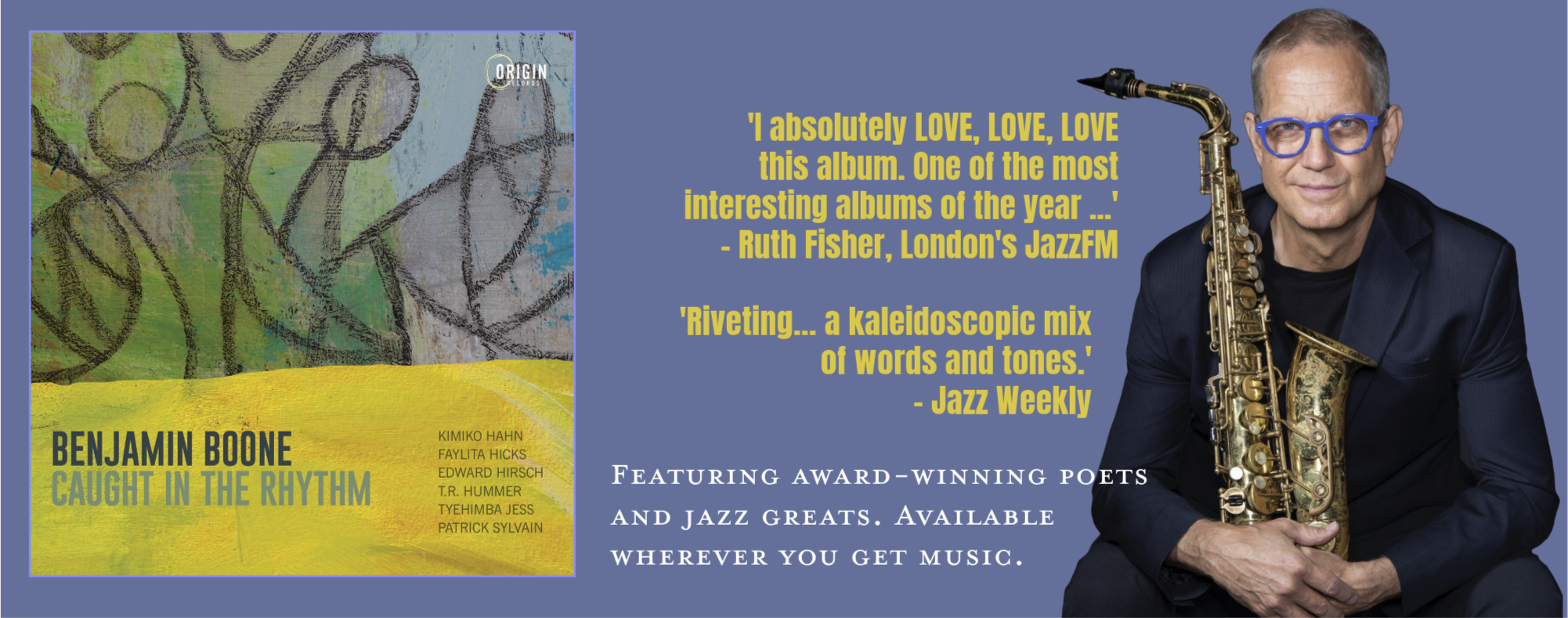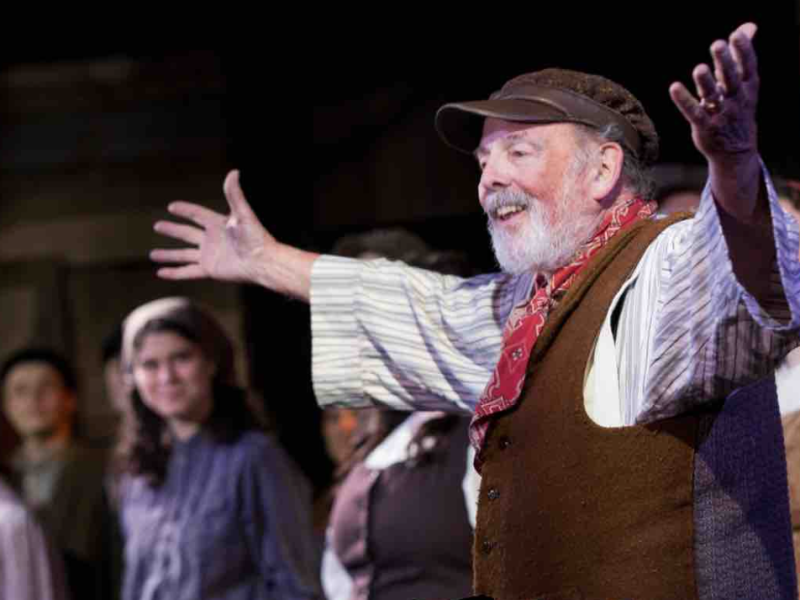Lay all your love on those backup vocals, because they’re one of the stars of ‘Mamma Mia’
THEATER PREVIEW
Take a chance on me, please, as I try to paint this “Mamma Mia” mental image for you in vivid detail:
It’s backstage at Roger Rocka’s Dinner Theater during the show (now in its opening weekend). Jacquie Broach, a Good Company Players veteran and an ensemble member, is dressed like a “Greek grandma.” Think layered peasant garb meets Ninja warrior: black stockings, black shoes, black skirt, black babushka. She and her fellow ensemble members have just come offstage after singing the ABBA song “Under Attack,” which involves lots of energetic dancing around the daughter character, Sophie (Caitlyn Lopez), while she has a nightmare about her upcoming wedding. Now that they’re backstage, everyone is shucking off clothes to change for upcoming numbers, in Broach’s case the wedding scene. As she puts it, “We strip right there down to our undies.”

Alex Figueroa and Paige Parker, center, get frisky in “Does Your Mother Know” in the new production of “Mamma Mia.” Photo / Good Company Players
Off comes her sweaty Greek garb. On goes her wedding wear: dress, jewelry, high heels.
But as all this controlled mayhem unfolds, the ensemble comes to one of its most important duties. The actors rush to one of two microphones. There, with garments dangling, they start singing the layered backup vocals for “One of Us,” performed by the mom character, Donna (Emily Pessano). To make sure they’re in sync with the recorded instrumental track and the live singing on stage, Broach gets down close to the monitor on the floor, so she can be sure to hear, and becomes a de facto conductor, pounding out the beat.
Why is the live backup singing so important?
“When people close their eyes, they want to hear ABBA,” says vocal coach Judith Dickison. “It has to be perfect.”
◊ ◊ ◊
The name of the game in “Mamma Mia,” of course, is to come as close as possible to the ABBA listening experience. That means recreating composers Benny Andersson and Björn Ulvaeus’s elaborately layered tracks, contrapuntal harmonies, rhythmic intricacies and percussive vocalizations that make the sound unique. The ensemble is as important as any of the principal singers. A good portion of that singing is done from backstage.
For example, think of the song “Take a Chance on Me.” At one point some of the backup singers launch into a group chant, spitting out the trademark “Take a chance, take a chance, take a chance” rapidly and repeatedly.
In the recording studio, a band is able to layer track upon track to create a rich sound like ABBA’s. But when you’re singing live, it’s more complicated.
The number of vocal parts in “Mamma Mia” varies depending on the song, but there are as many as 15 in addition to the principal vocal line. There are also a few songs that use pre-recorded vocals. Richard Mynderup, another Good Company veteran, used some of his students from Kingsburg High School to lay down tracks that are part of his recorded music for the show.
“Otherwise we’d need an ensemble the size of the Mormon Tabernacle Choir,” Dickison says.

Harry (Bill Johnson) and Donna (Emily Pessano) fondly remember “Our Last Summer” in the new production of “Mamma Mia.” Photo / Good Company Players
There are a lot of technical reasons why ABBA sounds the way it does, and the music theory can get complicated. In a 2008 article for the London Telegraph titled “Why Everyone Loves ABBA,” Ivan Hewett offered this explanation:
Pop music on the whole works by draining away the directional tension of classical harmony, substituting a more relaxed, sexy harmonic world that floats between the tonic and other keys. Benny and Björn, the interchangeable mop-haired composers of ABBA’s songs, put some of that tension back — but not too much, of course, otherwise their songs wouldn’t be recognizable as pop at all.
“Lay all Your Love on Me” is a brilliant song partly because it puts these two harmonic worlds together and holds them in balance. In the verse, we hear the flattened 7th, the typical signal of pop’s easy-going motion; in the chorus, we get the sharpened 7th, and suddenly the music becomes “classically” urgent. We know where the phrase is heading, and we want it to get there.
Often in an ABBA song, the harmonic tension is further whipped up by a rhythmic ingenuity, which throws irregularities against the insistent beat … That, in a nutshell, is the secret of an ABBA song. The chirpy, catchy surface sound draws you in, and once you’re in you feel secure because the iron grip of the song’s structure leads you by the hand.
Dickison can tell you all about that music theory, too, but she also recognizes that part of the draw of ABBA is more on the primal-dance level.
“I can’t sit still when I hear ‘Dancing Queen,’” she says.
◊ ◊ ◊
Thank you for the music, Jacquie Broach would say to ABBA if she could. Let’s return to her in the theater, behind the curtain, half-dressed and awkwardly configured on the ground, as she belts out the backup vocals to “One of Us.”

Melanie Heyl, Enrique Valdez, Jacquie Broach and Erik Valencia are guests at the Summer Night City Taverna in the new production of “Mamma Mia.” Photo / Good Company Players
It’s Broach’s favorite song in the show, which makes it a high point for her, even if at the moment she might not be at her most elegant.
And all the while she still might be tugging on a shoe or fastening an earring.
“You can still change a little when you sing,” she says.
I understand Broach’s enthusiasm. Though it might be cliche to name “Dancing Queen” as a favorite, the song always makes me smile. For me, it isn’t so much the song’s melody line, lyrics or even the happy beat that makes it great.
The genius is the backup vocals, which build “from languid yet seductive verses to a dramatic chorus that ascends to heart-tugging high notes as the lyrics reach their emotional peak,” writes music critic Donald A. Guarisco. “Andersson’s keyboard lines accentuate the classical complexity of the melody and Ulvaeus and Andersson weave countless instrumental hooks (string riffs, stately keyboard runs, and swirling synth lines, to name a few) in and out of the mix that layer the tune without ever weighing it down. The grandiose arrangement is topped off by the powerful vocals.”
As those notes swell, it’s almost as if you’re taking off and flying with the singers. How can you not feel buoyant, no matter your original mood?
Broach, in turn, understands my enthusiasm. For her, being in “Mamma Mia” is as fun backstage as in front.
“Getting to sing those back-up harmonies, it just makes my heart so happy,” she says.
Show info
“Mamma Mia,” through May 20, Roger Rocka’s Dinner Theater, 1228 N. Wishon Ave., Fresno. Tickets are $32-$60.
To subscribe to the email newsletter for The Munro Review, go to this link:









Jackie Ryle
I especially enjoyed this! Thank you, Donald!